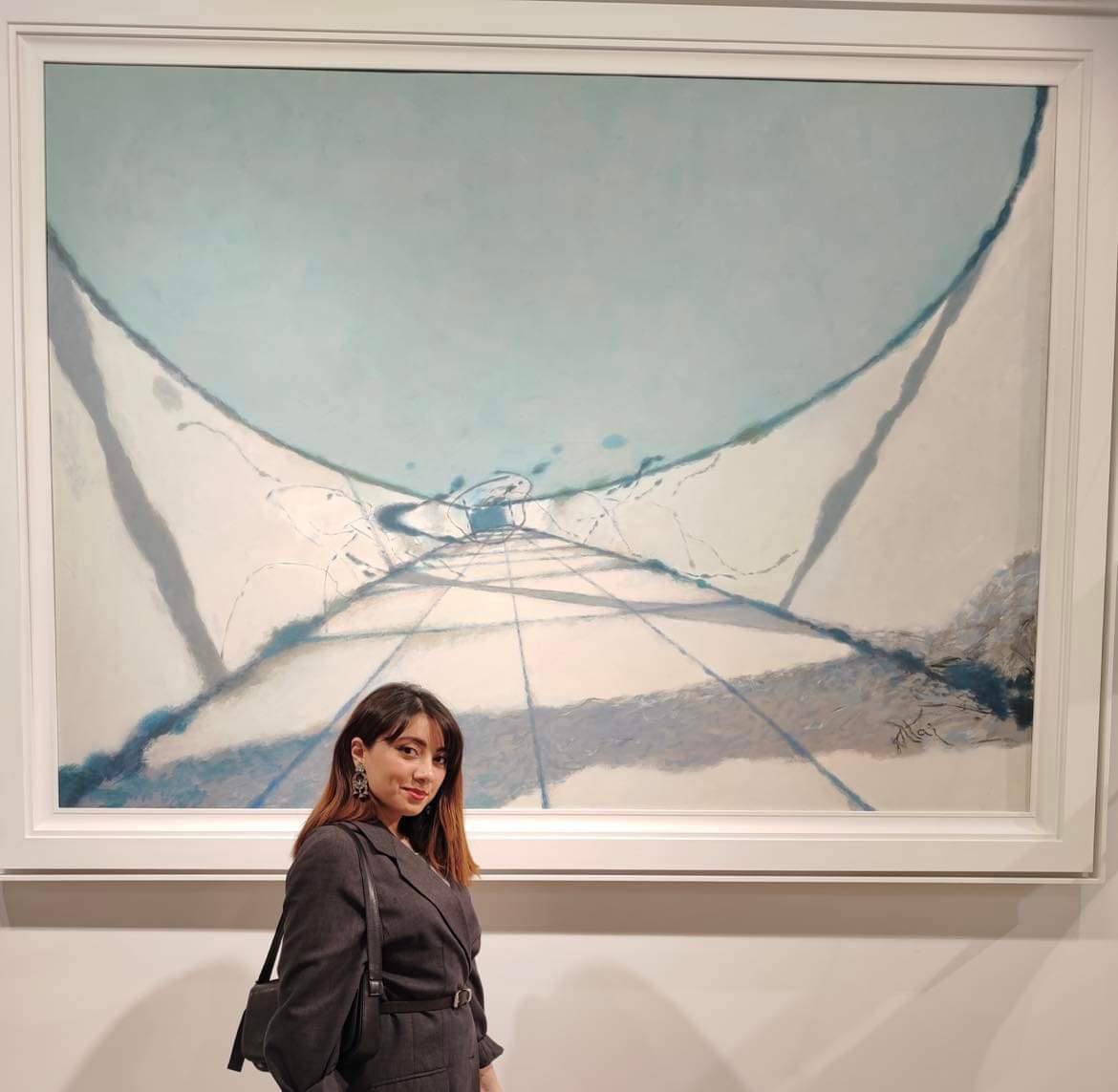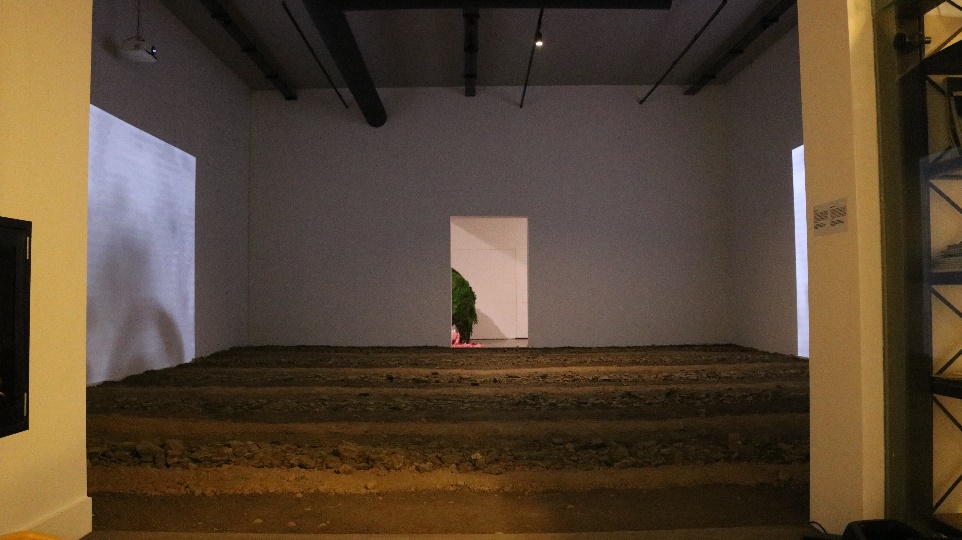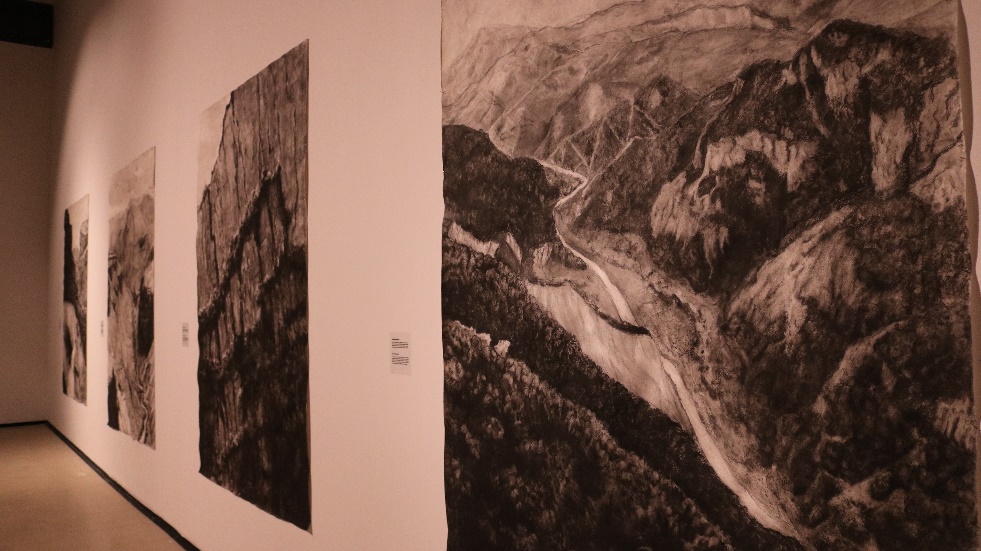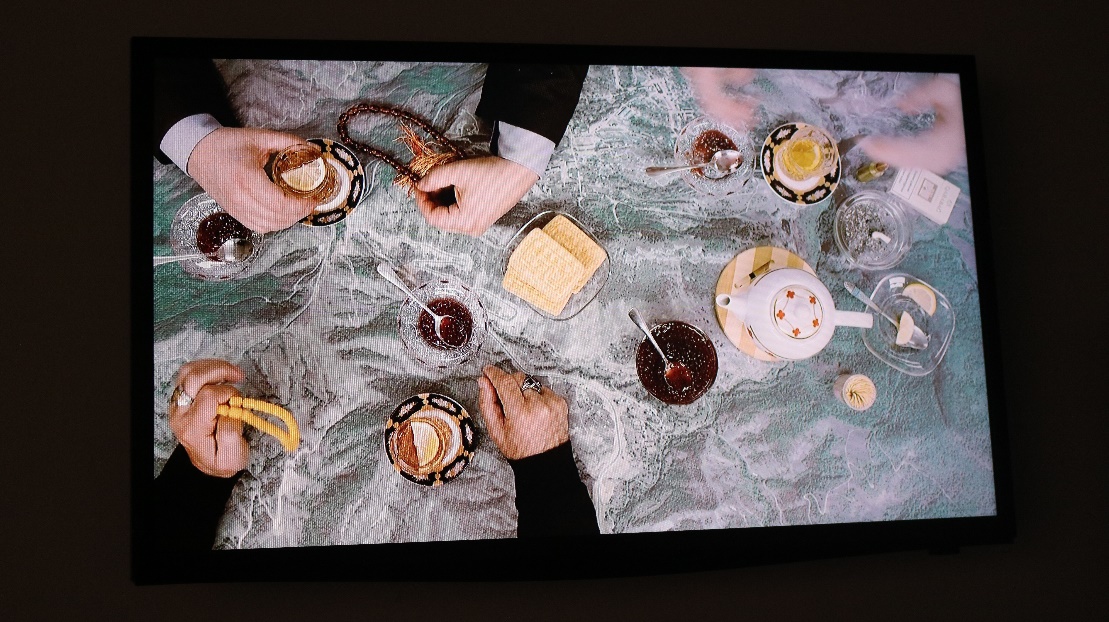
The YARAT Art Center in Baku continues to serve as a hub for cultural expression and dialogue, offering visitors a space to engage with thought-provoking exhibitions. Currently, the center presents two exhibitions: "Equinox" and "Checked and No Mines." These exhibitions delve into themes of collective trauma and memory, offering viewers a nuanced perspective on historical events and their enduring impact on society.
 The exhibition "Checked and No Mines" showcases a diverse array of artworks, including performance pieces, video installations, and graphic works by prominent artists such as Khanlar Gasimov, Orkhan Huseynov, Elturan Mammadov, Kamilla Muradova, Vusal Rahim, and Sabina Shikhlinskaya. Commissioned by YARAT, these works explore the aftermath of the Karabakh conflicts and the lasting scars left by landmines in the region.
The exhibition "Checked and No Mines" showcases a diverse array of artworks, including performance pieces, video installations, and graphic works by prominent artists such as Khanlar Gasimov, Orkhan Huseynov, Elturan Mammadov, Kamilla Muradova, Vusal Rahim, and Sabina Shikhlinskaya. Commissioned by YARAT, these works explore the aftermath of the Karabakh conflicts and the lasting scars left by landmines in the region.
Art critic Ulker Aliyeva provides valuable insights into the exhibition, noting the exhibition's focus on the collective trauma ingrained in the consciousness of the Azerbaijani people since the emergence of the Karabakh conflicts. Aliyeva emphasizes the intergenerational transmission of trauma, which has persisted for over three decades, leaving indelible marks on society.
 Aliyeva highlights the exhibition's attempt to shed light on the presence of landmines in the post-war Karabakh, drawing attention to the environmental and cultural devastation caused by these hidden threats. Through their artistic endeavors, the participating artists aim to raise awareness about the ongoing repercussions of the Karabakh wars, urging viewers to confront the legacy of violence and displacement.
Aliyeva highlights the exhibition's attempt to shed light on the presence of landmines in the post-war Karabakh, drawing attention to the environmental and cultural devastation caused by these hidden threats. Through their artistic endeavors, the participating artists aim to raise awareness about the ongoing repercussions of the Karabakh wars, urging viewers to confront the legacy of violence and displacement.
One particularly striking element of the exhibition is the land exposition at its entrance, which Aliyeva describes as an intriguing and bold gesture. The inclusion of soil from various regions of Karabakh serves as a poignant reminder of the connection between land and memory, prompting viewers to reflect on their own mortality and the cyclical nature of life.
Artists' Personal Trauma Evident in Karabakh Exhibition
 At the YARAT Art Center's current exhibition, "Checked and No Mines," artists not only delve into the collective trauma of the Karabakh conflicts but also bravely confront their own personal experiences. Among them, Kamilla Muradova stands out, as she shares her deeply personal connection to the Karabakh issue through her artwork.
At the YARAT Art Center's current exhibition, "Checked and No Mines," artists not only delve into the collective trauma of the Karabakh conflicts but also bravely confront their own personal experiences. Among them, Kamilla Muradova stands out, as she shares her deeply personal connection to the Karabakh issue through her artwork.
Art critic Ulker Aliyeva sheds light on Muradova's contribution to the exhibition, noting her poignant exploration of personal trauma. Muradova's father, a pilot, tragically lost his life during the first Karabakh War in a helicopter crash. This profound loss forms the backdrop of Muradova's artistic expression, infusing her work with a raw emotional intensity.
In her graphic works, Muradova employs a striking contrast of white and black, each color carrying its own symbolic weight in relation to the Karabakh conflict. Through this visual language, she navigates the complexities of grief, memory, and resilience, inviting viewers to contemplate the multifaceted nature of the conflict and its enduring impact on individual lives.
The most striking video installation
 Among the thought-provoking artworks on display at the YARAT Art Center's "Checked and No Mines" exhibition, Elturan Mammadov's 16-channel video installation, "non-round tables," stands out as a compelling exploration of political discourse in the aftermath of the Karabakh conflict. Art critic Ulker Aliyeva, captivated by the installation's complexity and realism, identifies it as the most striking piece in the exhibition.
Among the thought-provoking artworks on display at the YARAT Art Center's "Checked and No Mines" exhibition, Elturan Mammadov's 16-channel video installation, "non-round tables," stands out as a compelling exploration of political discourse in the aftermath of the Karabakh conflict. Art critic Ulker Aliyeva, captivated by the installation's complexity and realism, identifies it as the most striking piece in the exhibition.
At the heart of Mammadov's installation lies a map of Karabakh, surrounded by signs indicating different regions. However, it is the portrayal of political conversations unfolding within the confines of a teahouse – the "non-round tables" – that truly captivates viewers. Through meticulous attention to detail and a nuanced understanding of human interaction, Mammadov offers a candid depiction of the complexities and tensions inherent in post-conflict dialogue.
Aliyeva highlights the installation's ability to convey a sense of authenticity, noting that the depicted conversations resonate with experiences familiar to many. By grounding his work in the realities of everyday life, Mammadov sidesteps the trap of excessive pathos often associated with sensitive topics such as the Karabakh conflicts, allowing viewers to engage with the subject matter in a more nuanced and introspective manner.
Notably, the participants in the videos are individuals who have directly experienced the realities of the first and second Karabakh Wars. Their presence adds a layer of authenticity and poignancy to the installation, highlighting the profound impact of conflict on individual lives and communities.
In discussing the broader significance of the exhibition, Aliyeva observes that while it addresses a topic that is inherently sensitive and complex, the works on display offer a refreshingly modern and nuanced perspective. Unlike other artworks on the Karabakh theme created in recent years, the pieces in the "Checked and No Mines" exhibition eschew simplistic narratives in favor of a more multifaceted exploration of the post-war realities.













Leave a review